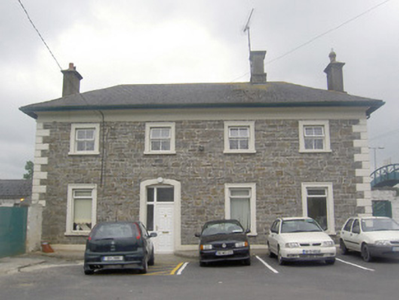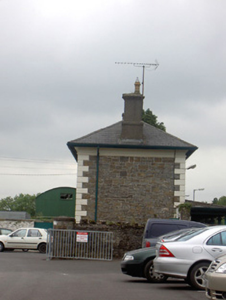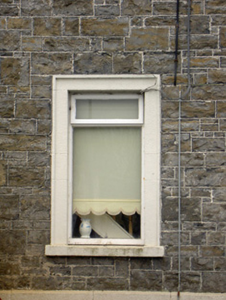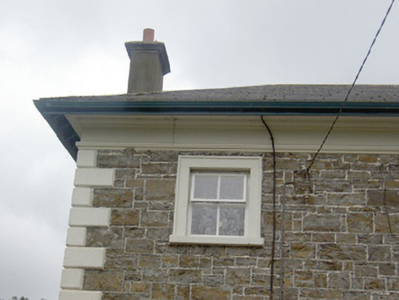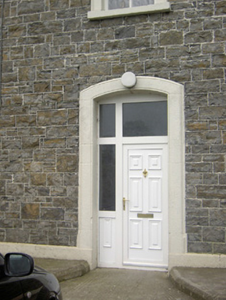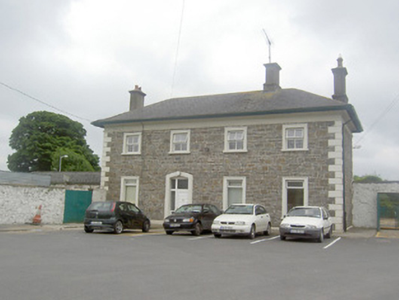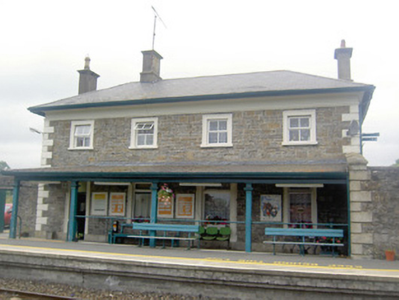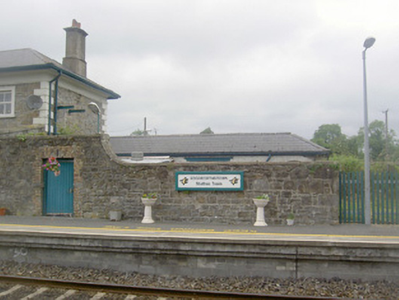Survey Data
Reg No
13309002
Rating
Regional
Categories of Special Interest
Architectural, Artistic, Social
Previous Name
Mostrim Railway Station
Original Use
Railway station
In Use As
Railway station
Date
1850 - 1860
Coordinates
226289, 271066
Date Recorded
14/07/2005
Date Updated
--/--/--
Description
Detached four-bay two-storey railway station, built c. 1855, with open lean-to canopy/platform shelter supported by square-profile carved timber piers to the south elevation and a single-storey addition attached to the east elevation. Hipped artificial slate roof with overhanging eaves, rendered chimneystacks and cast-iron rainwater goods. Render eaves cornice. Snecked limestone walls over stone plinth with dressed limestone quoins to the corners. Square-headed window openings with tooled limestone surrounds, cut stone sills and replacement timber windows. Segmental-headed opening to the north elevation with tooled limestone surround, replacement door and replacement sidelight and overlight. Square-headed door opening to platform (south) elevation with tooled limestone surround, replacement timber door and overlight. Squared rubble limestone walls to site. Located to the north side of the Dublin to Sligo railway line. Footbridge (13309003) and signal box (13309004) to the west. Set back from road to the southeast of Edgeworthstown.
Appraisal
This Victorian railway station retains its early form, character and much of its early fabric. The fine limestone masonry and attention to detail is typical of Victorian railway architecture. High quality craftsmanship is evident in the dressings and detailing to the openings. It was originally built by the Midland and Great Western Railway Company in 1850 - 1855 to serve the Mullingar to Sligo line. It was probably built to designs by George Wilkinson (1814 - 1890), a noted architect of his day, who also completed the designs for a number of other railway stations for The Midland and Great Western Railway Company (on the Mullingar to Longford and the Inny Junction to Cavan lines) at this time. This building is very similar in style to the railway stations at Dromod, County Leitrim (30818010), and at Longford Town (13004044). It forms the centrepiece of a group of structures associated with Edgeworthstown Railway Station, along with the footbridge (13309003) and the signal box (13009004). It represents an important component of the architectural and industrial heritage of Edgeworthstown and the social and economic history of the County Longford.

